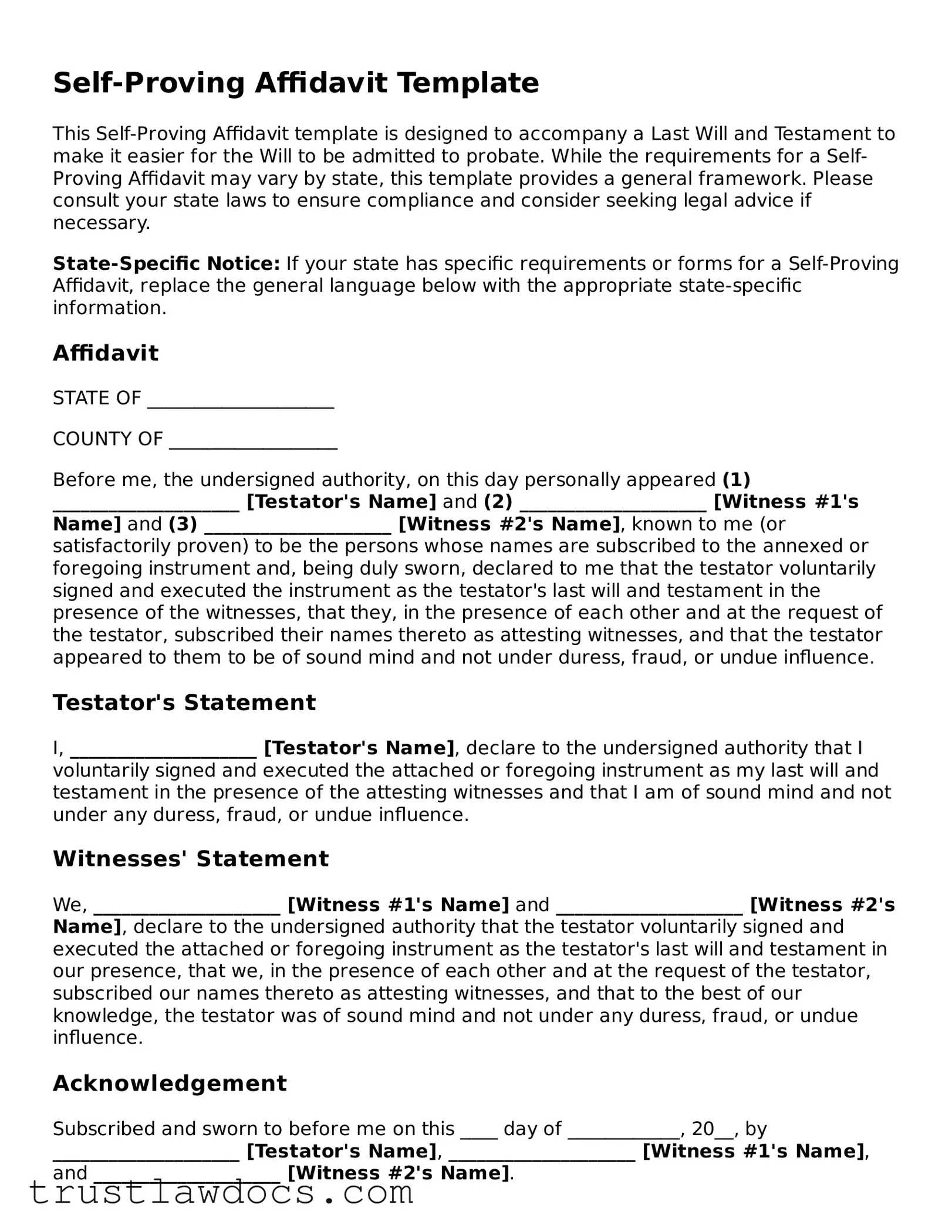Self-Proving Affidavit Template
This Self-Proving Affidavit template is designed to accompany a Last Will and Testament to make it easier for the Will to be admitted to probate. While the requirements for a Self-Proving Affidavit may vary by state, this template provides a general framework. Please consult your state laws to ensure compliance and consider seeking legal advice if necessary.
State-Specific Notice: If your state has specific requirements or forms for a Self-Proving Affidavit, replace the general language below with the appropriate state-specific information.
Affidavit
STATE OF ____________________
COUNTY OF __________________
Before me, the undersigned authority, on this day personally appeared (1) ____________________ [Testator's Name] and (2) ____________________ [Witness #1's Name] and (3) ____________________ [Witness #2's Name], known to me (or satisfactorily proven) to be the persons whose names are subscribed to the annexed or foregoing instrument and, being duly sworn, declared to me that the testator voluntarily signed and executed the instrument as the testator's last will and testament in the presence of the witnesses, that they, in the presence of each other and at the request of the testator, subscribed their names thereto as attesting witnesses, and that the testator appeared to them to be of sound mind and not under duress, fraud, or undue influence.
Testator's Statement
I, ____________________ [Testator's Name], declare to the undersigned authority that I voluntarily signed and executed the attached or foregoing instrument as my last will and testament in the presence of the attesting witnesses and that I am of sound mind and not under any duress, fraud, or undue influence.
Witnesses' Statement
We, ____________________ [Witness #1's Name] and ____________________ [Witness #2's Name], declare to the undersigned authority that the testator voluntarily signed and executed the attached or foregoing instrument as the testator's last will and testament in our presence, that we, in the presence of each other and at the request of the testator, subscribed our names thereto as attesting witnesses, and that to the best of our knowledge, the testator was of sound mind and not under any duress, fraud, or undue influence.
Acknowledgement
Subscribed and sworn to before me on this ____ day of ____________, 20__, by ____________________ [Testator's Name], ____________________ [Witness #1's Name], and ____________________ [Witness #2's Name].
____________________ [SEAL]
____________________ [Notary Signature]
____________________ [Printed Name of Notary]
My Commission Expires: ____________________
